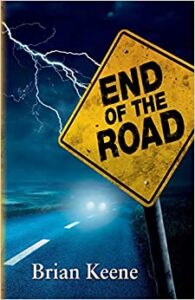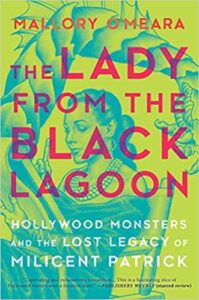End of the Road by Brian Keene
Cemetery Dance, 2020
ISBN-13 : 978-1587677939
Available: Paperback, Kindle edition ( Amazon.com | Bookshop.org )
End of the Road is a memoir consisting mainly of weekly columns horror writer Brian Keene wrote for the Cemetery Dance website to finance his 2016 signing tour, the “Farewell (But Not Really) Tour”, which lasted from May to December of 2016. It also contains some additional material, including an introduction by Gabino Iglesias and a piece written by Tom Piccirilli, as well as epilogues going through about April 2017. In addition to chronicling his journeys to bookstores and conventions across the country, Keene shares his experiences with grieving the recent deaths of three close friends including writers Tom Piccirilli and J.F. Gonzalez and his reflections on mortality. He attended the last World Horror Convention during the tour and recalls fond memories of past conventions and friendships, and, as a member of the planning committee for the charity weekend Scares that Care, gives that some space as well. He writes about meeting up with friends and fans he’s made in the horror genre, the value of independent bookstores and local conventions, and the loss of individuality he sees in towns as he drives across America. His focus is definitely not on the controversies going on in the horror writing community at that time: he is looking back, not forward.
Keene also muses over his generation of horror writers (he had been a published writer and outspoken advocate for the genre for about 20 years at that time), touching on the changes in publishing and selling since he started as both a reader and a writer. From about 2000 on, I watched many of the changes from the sidelines, seeing the conversations on Shocklines on ebook vs. print, the effect of the failure of Dorchester Publications, the changes from almost entirely small-press limited editions to easier availability to a much wider variety due to ebooks. He describes his own vision of the six “waves” of horror writers, putting himself in the fifth wave, and ready to let go for the and let the most current wave to take over the direction of the horror genre. His prediction is that independent niche bookstores and Amazon will take over and drive chain stores out of business. As a former public librarian, I think it’s telling that none of his signings were in libraries, who often feature local writers and midlisters: maybe neither of his publishers thought he would find buyers there, or lists his titles with wholesalers, but Pressure, the book he was promoting, is the only one of his books available in my public library (on a personal note, my husband, the founder of Monster Librarian, who died at the age of 40 in 2014, loved and reviewed many of Keene’s previous books, and recommended them for library collections).
Keene is at his best in this book when he writes about the people and places he cares about. His description of his grandmother, and of West Virginia, is nuanced and vivid, and his frustration over the lack of recognition for Hunter S. Thompson comes through pretty solidly. His self-proclaimed middle-of-the-road politics make the book pretty much an artifact of the times, but he really puts himself out there in speaking about his grief, his love for family and friends, and his feelings about the horror genre.
I’m not sure why it took so long for the book to come out, given that (according to Keene’s epilogue) the epilogue ends in February 2017 and the foreword was written in April 2017. While it is an interesting read ( and will be reflective of many interested readers’ experiences), it is not likely to be of wide interest outside the horror community. That said, current members of the horror community may enjoy his reminisces and appreciate his musings on the state of the horror genre circa 2016. Keene still has a blog, a newsletter, a Patreon, and does podcasts, so readers who are interested in what’s going on with him currently have many opportunities to do so. End of the Road is really a snapshot of his state of mind at that particular time, and a way to support a writer readers and friends want to support.
Reviewed by Kirsten Kowalewski
Editor’s note: End of the Road is a nominee on the final ballot for this year’s Bram Stoker Award in the category of Superior Achievement in Nonfiction.






Follow Us!